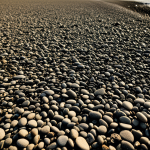Essential Ingredients and Ingredient Selection
Choosing the best fish for fish and chips is crucial for an authentic experience. Traditionally, cod and haddock lead the list due to their flaky texture and mild flavor. These fish hold up well to frying, maintaining a delicate balance of moisture inside and crispiness outside. Freshness is key; always select fish with firm flesh and a clean, oceanic scent to ensure quality.
When it comes to potato selection, starchy varieties like Maris Piper or King Edward are preferred. Their high starch content and low moisture create fluffy interiors with crisp exteriors once fried. Fresh potatoes also impact texture significantly—avoid older or waxy types that can make chips soggy or dense.
Have you seen this : Discover the Ultimate Korean Bulgogi: Flavors Elevated with a Tangy Pear and Ginger Marinade!
Essential to the crust is the batter. A simple combination of flour, baking powder, and cold sparkling water forms the base, yielding a light, crispy coating. The choice of oil affects quality too; neutral oils with high smoke points, such as vegetable or sunflower oil, are ideal to maintain consistent frying temperature and flavour. Classic seasoning like malt vinegar and sea salt enhances flavor, tying all fish and chips ingredients harmoniously together.
Preparing Fish and Batter
Detailing preparation methods essential for homemade fish and chips
Also to read : Discover the Ultimate Korean Bulgogi: Flavors Elevated with a Tangy Pear and Ginger Marinade!
Proper preparation of fish is a cornerstone for excellent homemade fish and chips. Begin with fresh, skinless fillets of the best fish for fish and chips like cod or haddock. Clean the fish carefully to remove moisture that can dilute the batter. Cut into even portions to ensure uniform cooking. Light seasoning with salt before battering enhances natural flavors without overpowering.
The fish batter recipe typically includes flour, baking powder, and cold sparkling water, offering a light texture. Mixing should be gentle to avoid gluten development; overmixing toughens the batter. Resting the batter for about 20–30 minutes improves its ability to cling to the fish and develop bubbles during frying, leading to a crispy coating.
Achieving the correct batter consistency is crucial. A batter too thick coats unevenly and may become doughy; too thin fails to adhere properly. Aim for a texture similar to heavy cream that smoothly covers the fish fillets. This careful attention to batter preparation guarantees the signature crispiness defining quality fish and chips.
Cutting and Preparing Chips
Step-by-step guide to achieving classic British chips texture and presentation
Proper potato cutting is fundamental to crafting authentic homemade chips. Aim for thick, uniform sticks roughly 1 to 1.5 centimeters wide. This size ensures an ideal balance: crispy edges with a fluffy interior. Irregular sizing leads to uneven cooking—some chips may burn while others remain undercooked.
After cutting, rinsing the potatoes thoroughly under cold water removes excess surface starch. This step prevents sticking during frying and promotes a crisper texture. Follow rinsing by drying them completely with a kitchen towel or paper towels. Moisture causes oil splatters and soggy chips, so dryness is essential.
Parboiling is a key technique for perfect British chips. Briefly boiling the potato sticks until they are just tender, about 5-7 minutes, firms up the interiors without falling apart. Draining and cooling thoroughly before frying helps chips achieve that desired fluffy core wrapped in a crispy crust.
By focusing on these steps—precise potato cutting, thorough rinsing and drying, plus strategic parboiling—you set the foundation for excellent homemade chips that complement the best fish for fish and chips beautifully.
Frying Techniques for Fish and Chips
Mastering deep frying fish begins with precise control of oil temperature. The ideal oil temperature for frying fish and chips is between 175°C and 190°C (347°F to 374°F). Maintaining this range ensures the batter crisps quickly without absorbing excess oil, producing the coveted crispy fish and chips texture. Using a thermometer is crucial for accuracy.
Start by frying the parboiled chips first at a lower temperature (around 160°C/320°F) to cook them through without browning. Once softened, remove and drain. Then increase the oil temperature to 190°C for a second fry that crisps the exterior. After chips come out, fry the battered fish quickly at the higher temperature. This sequence prevents sogginess and allows both components to finish perfectly.
To avoid greasy or limp chips, maintain steady oil heat and avoid overcrowding, which drops the temperature and slows cooking. Drain fried fish and chips on a wire rack rather than paper towels to keep crispiness intact by allowing steam to escape. These frying practices are essential for restaurant-quality homemade fish and chips.
Essential Ingredients and Ingredient Selection
Selecting the best fish for fish and chips involves prioritizing types like cod and haddock, prized for their flaky texture and mild flavor that withstand frying well. Freshness directly affects taste and texture; always choose fish with firm flesh and a fresh, ocean aroma, avoiding any with a slimy feel or ammonia scent.
Potato selection is equally critical for authentic chips. Starchy varieties such as Maris Piper or King Edward are preferred due to their high starch and low moisture, creating that ideal contrast of crisp exterior and fluffy interior. Freshness also matters—select potatoes free from sprouting or green spots to ensure consistent texture and flavor.
Beyond fish and potatoes, several other fish and chips ingredients are essential. The batter base typically combines plain flour, baking powder, and cold sparkling water to achieve a light, crispy coating. Neutral oils with high smoke points, like vegetable or sunflower oil, are vital to maintain steady frying temperatures without imparting off-flavors. Traditional seasonings such as malt vinegar and sea salt complete the flavor profile, enhancing the overall experience without overpowering the core ingredients.
Essential Ingredients and Ingredient Selection
Selecting the best fish for fish and chips is fundamental for authentic flavor and texture. Cod and haddock remain the top choices for their mildly sweet taste and flaky flesh, which fries evenly without falling apart. Freshness is indispensable; fish should have firm flesh and a clean, ocean scent. Avoid any sliminess or off smells to guarantee quality.
Potato selection significantly impacts chip quality. Starchy varieties like Maris Piper and King Edward provide the ideal balance: crisp exteriors with soft, fluffy interiors. Freshness in potatoes is equally vital—avoid those that are sprouting or have green spots, as these can affect both flavor and texture.
Beyond fish and potatoes, essential fish and chips ingredients include a well-balanced batter and appropriate frying oil. The batter’s base combines flour, baking powder, and cold sparkling water, which creates a light, bubbly coating. Neutral oils with high smoke points, such as vegetable or sunflower oil, maintain steady frying temperatures without introducing unwanted flavors. Traditional seasonings like malt vinegar and sea salt are indispensable finishing touches, enhancing but never overshadowing the core ingredients.






